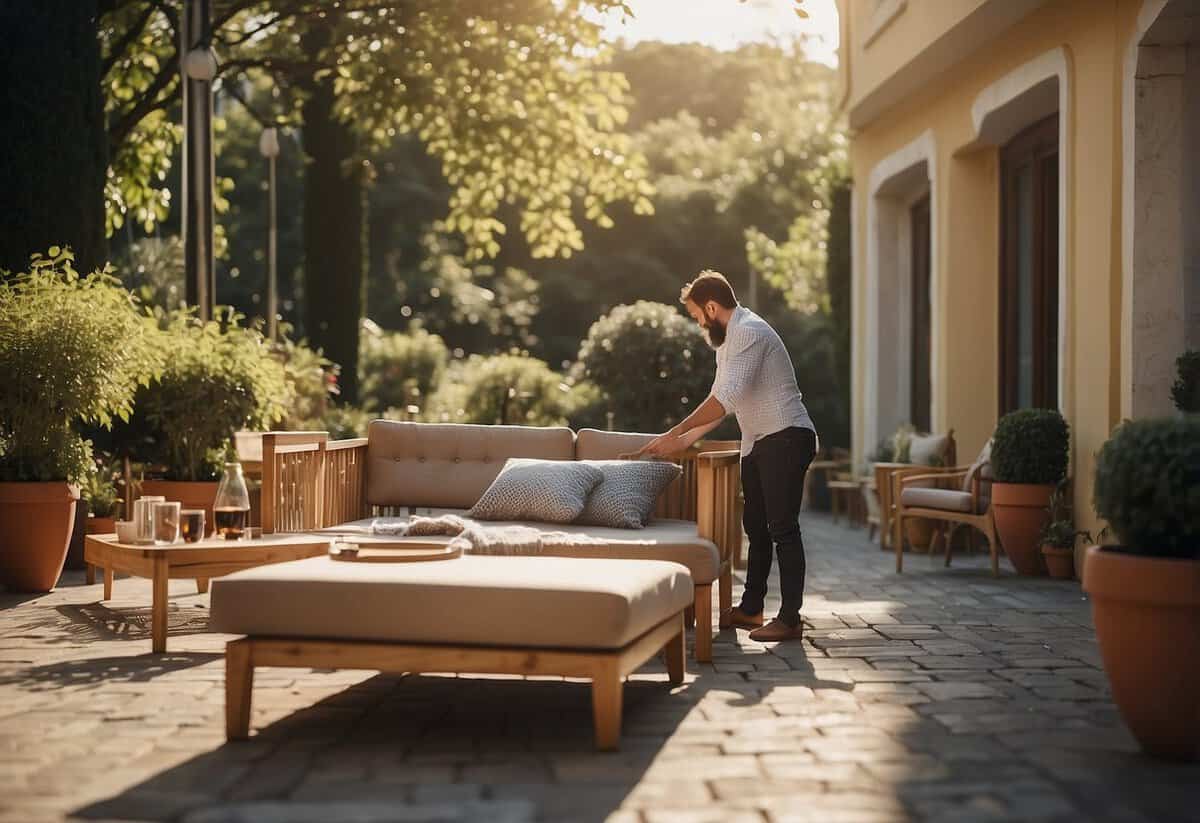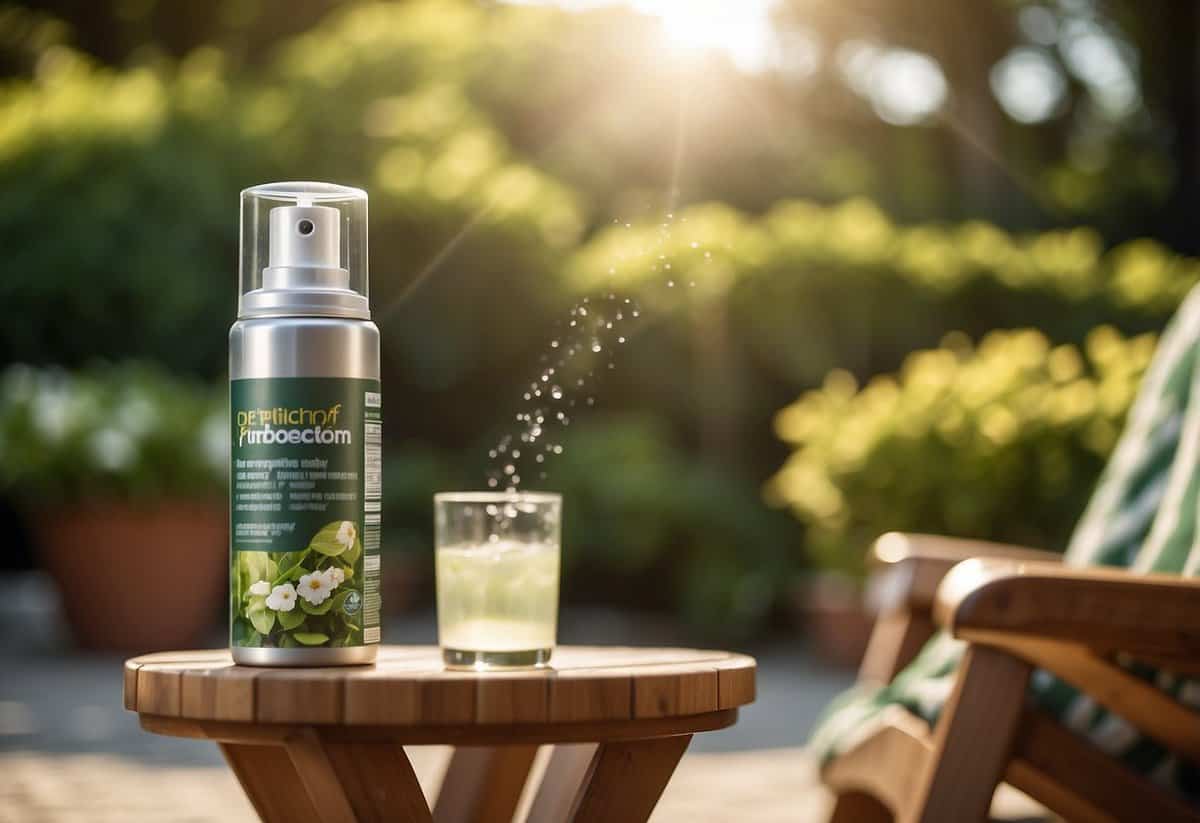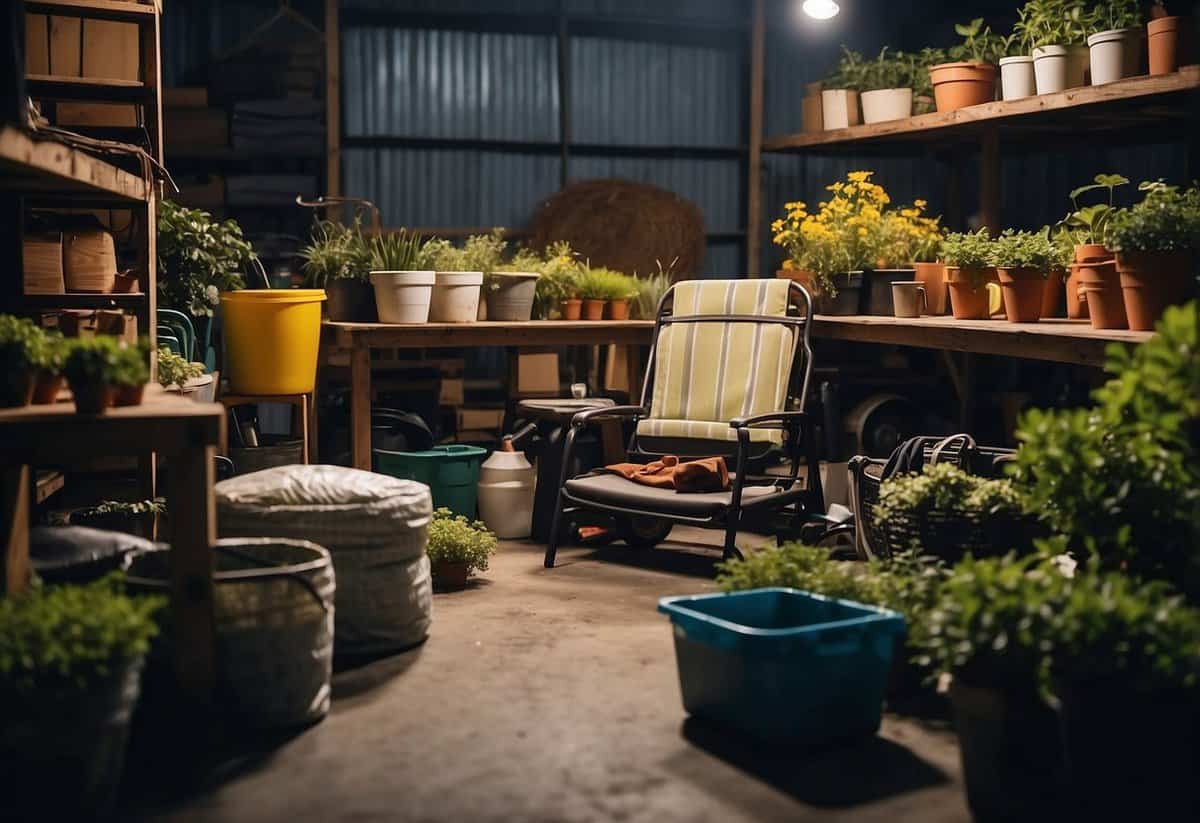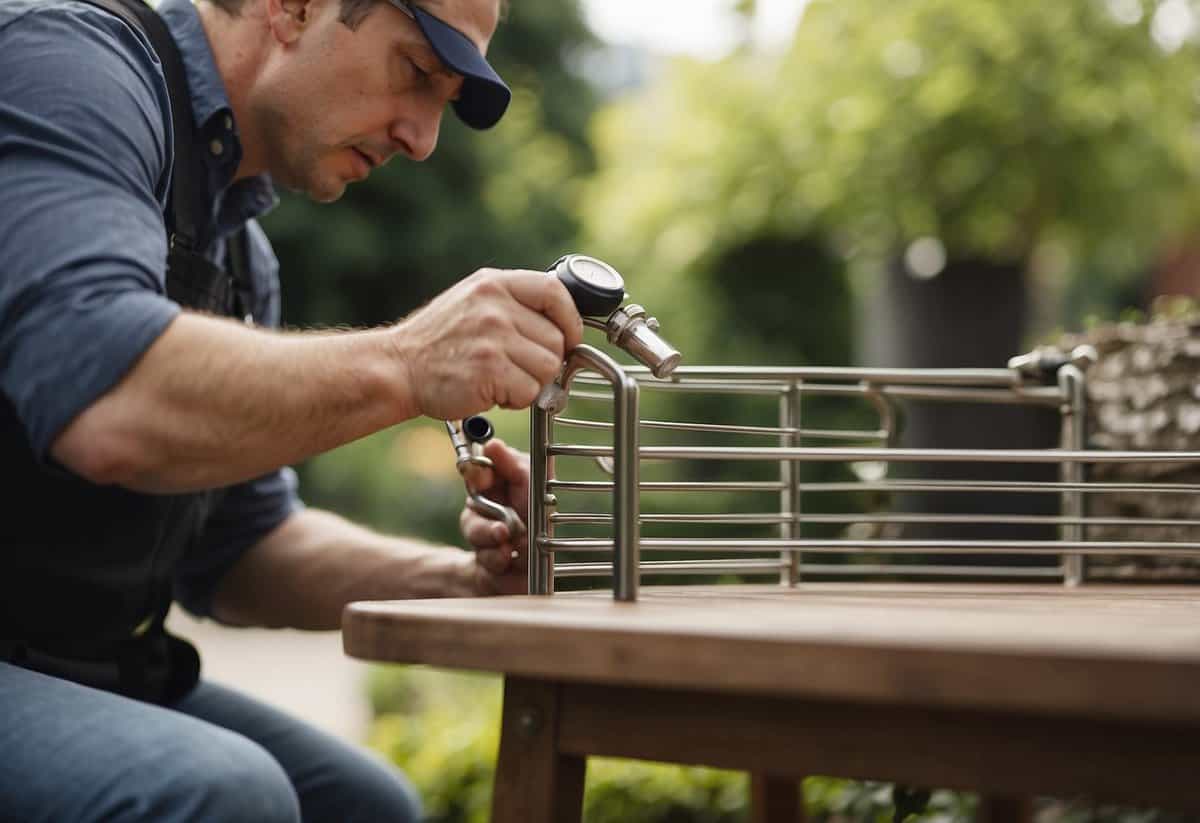Outdoor Garden Furniture Care Tips: Keep Your Space Looking Great
Taking care of your outdoor garden furniture not only keeps it looking great but also extends its life. Whether you have wooden benches, metal tables, or fabric cushions, regular maintenance helps prevent damage from weather and everyday use. How can you ensure your outdoor furniture remains in top condition year-round?

It’s simpler than you might think. By incorporating some easy cleaning and protective measures into your routine, your garden furniture can stay beautiful and functional for many seasons. Let’s explore some valuable tips to help you enjoy your outdoor spaces even more.
1) Clean Cushions Regularly

Keeping your outdoor cushions clean helps them last longer. Start by brushing off any loose dirt and debris.
Mix a cleaning solution with equal parts water and distilled white vinegar. Spray it on the cushions and let it sit for a few minutes.
Rinse thoroughly with clean water and let the cushions air dry completely before using them again. Regular cleaning prevents mold and keeps your outdoor space looking fresh.
2) Use Protective Covers

Using protective covers is essential for keeping your outdoor garden furniture in great shape. Covers shield your furniture from rain, sun, and dirt.
Make sure the covers fit well. A good fit prevents water and debris from getting in.
Consider covers made of durable, waterproof materials. They offer the best protection and last longer.
Regularly clean your covers to remove leaves and dust. Simply rinse with a hose and let them dry.
Check your covers for any tears or damage periodically. Fixing small issues early helps keep your furniture safe.
3) Apply UV Protectant

Applying a UV protectant is essential for keeping your outdoor garden furniture looking new. Over time, the sun’s rays can cause fading and damage. A good UV protectant helps shield the material from these harmful effects.
It’s easy to find UV sprays designed for different types of furniture. Just make sure to choose the one that matches your furniture’s material. By doing this, you extend the life and beauty of your furniture. For more information, you can check out these tips on protecting outdoor furniture.
4) Choose Weather-resistant Materials

Choosing the right materials is key for long-lasting outdoor furniture. Look for furniture made from aluminum, which is lightweight, easy to move, and rust-resistant.
Another great option is synthetic resin wicker. It mimics natural wicker but stands up to rain and sun better.
For cushions and fabrics, consider Sunbrella. This fabric resists fading, mildew, and UV rays, making it perfect for any weather.
5) Store Indoors During Off-season

When the weather gets colder, it’s best to move your outdoor furniture indoors. This helps protect it from harsh winter conditions.
If you can’t store it indoors, use a weatherproof cover. This will keep your furniture safe from rain, snow, and ice.
Storing your furniture properly extends its life and keeps it looking great for next season.
6) Wipe Down Metal Surfaces

Use a damp cloth to clean off any dirt or dust from your metal patio furniture. Regular cleaning helps maintain its appearance and prevents dirt buildup.
For tougher stains, mix a bit of liquid dish soap with warm water. Gently scrub the area. Avoid using abrasive materials to keep from scratching the metal.
Ensure all soap residue is thoroughly rinsed off. This way, your furniture stays shiny and lasts longer. For more detailed cleaning tips, refer to this guide on cleaning metal patio furniture. Keep your outdoor furniture looking great!
7) Remove Rust with Baking Soda

Baking soda is a simple and effective solution for removing rust from outdoor garden furniture.
First, make a paste by mixing baking soda with water.
Apply this paste to the rusty areas and let it sit for a while.
Use a scrub brush to gently scrub the rust away.
Rinse with water and dry thoroughly. If needed, repeat the steps until the rust is gone.
For stubborn rust spots, you can reapply the baking soda paste and scrub again.
8) Re-paint or Re-stain Wood

To refresh your outdoor wood furniture, you might need to re-paint or re-stain it. Start by removing any loose or peeling paint using sandpaper. Be gentle to avoid damaging the wood surface.
Next, choose between paint and stain. Paint offers long-lasting protection and bold colors, while stain preserves the natural wood look and dries faster.
Make sure the wood is clean and dry before applying the paint or stain. Apply evenly and let it dry completely. To improve durability, you may need to add a protective sealer after staining your furniture.
For more detailed tips, visit this guide on restoring outdoor wood furniture.
9) Check for Loose Screws

Regularly inspect your outdoor garden furniture for loose screws or bolts. Loose hardware can make your furniture unstable and unsafe.
Use a screwdriver or wrench to tighten any screws or bolts you find. This simple step helps maintain the integrity and safety of your furniture.
Addressing loose hardware promptly prevents potential damage and extends the life of your furniture.
10) Clean Wicker with a Brush

To keep your wicker furniture looking its best, use a soft brush.
A brush helps remove dust and debris from the tight spaces in the weave.
Use gentle strokes to avoid damaging the wicker.
If there are stubborn spots, mix mild soap with water and gently scrub.
Remember to avoid using excessive water to prevent warping.
General Outdoor Furniture Care Tips

Keeping your outdoor furniture in top shape involves regular cleaning and protecting it from weather elements. Focus on these practices to extend the life of your garden pieces.
Regular Cleaning Practices
You should clean your outdoor furniture at least once a month. For most types of furniture, a simple mixture of mild soap and warm water works well. Mix a few drops of soap with water in a bucket, then use a soft-bristled brush to scrub the surface gently.
Steps for Cleaning Different Materials:
- Wood Furniture: Use a mild soap and water solution to avoid damaging the wood. After scrubbing, rinse thoroughly with clean water and let it dry completely.
- Metal Furniture: Wipe down metal surfaces with a soft cloth and soapy water. For rust spots, use a combination of 1/4 cup baking soda and 1/2 cup white vinegar. Let it sit for 15 minutes, scrub, then rinse clean.
- Fabric Cushions: Remove the covers and wash according to the manufacturer’s instructions. If they are not machine washable, scrub with soapy water and rinse well. Allow them to air dry completely to prevent mold.
A consistent cleaning schedule helps keep your furniture looking new and prevents buildup of dirt and grime.
Protecting Furniture from Weather
Outdoor furniture is exposed to various weather conditions that can cause damage. To protect your pieces, consider these important steps.
Shielding from Sun and Rain:
- During peak heat: Move plastic or resin furniture to the shade. Prolonged sun exposure can cause cracking.
- Heavy Rain: Use waterproof covers or store furniture in a shed or garage during storms to prevent water damage.
Winter Storage Tips:
- Metal Furniture: Apply a rust-resistant primer or a fresh coat of paint to guard against moisture.
- Wood Furniture: Treat with a protective sealant to stop it from absorbing moisture, which can lead to warping or splitting.
- Fabric: Keep cushions and other fabric items in a dry, indoor place during the off-season.
By taking these protective measures, you can ensure that your outdoor furniture stays in good condition throughout the year.
Material-Specific Care Instructions

Proper care for your outdoor garden furniture ensures it lasts longer and looks better. Each material needs different treatments to stay in top shape.
Wood Furniture
To maintain wood furniture, start by cleaning it regularly. Use a mild soap mixed with water and a soft brush. Clean gently to avoid scratches. After cleaning, rinse with clean water and pat dry with a lint-free cloth.
Apply a weatherproof, exterior-grade stain or sealant once a year. Lightly sand the wood before applying the stain to remove any old fibers. This helps the stain adhere better.
Inspect wood furniture for any damage like splinters or cracks. Repair these promptly to prevent further deterioration. When it’s off-season, store your wood furniture indoors or use covers to protect it from harsh weather.
Metal Furniture
Start by cleaning metal furniture with a solution of distilled white vinegar and water. Use 50% vinegar for galvanized steel and 25% for stainless steel. Apply using a spray bottle or soft cloth. Rinse off the solution with a cloth dampened in warm water.
For rust stains, sand lightly along the grain using fine-grit sandpaper. If the rust-covered area is large, mix hot water with wood bleach and apply with a soft-bristle brush.
After cleaning and removing rust, pat the surface dry with a lint-free cloth. Protect metal furniture by applying a protective finish to prevent oxidation and rust. Store metal furniture during harsh weather to extend its life.
Plastic Furniture
Plastic furniture is easy to maintain. Clean it regularly using a solution of mild soap and water. For tough stains, use a mixture of baking soda and water. Scrub gently with a soft brush to avoid scratches.
Rinse thoroughly with clean water and dry with a soft cloth. Avoid using abrasive cleaners or scouring pads, as these can scratch and weaken the plastic.
To prevent fading and brittleness due to sun exposure, use covers when not in use or store indoors. During offseason months, cover your plastic furniture or store it to protect it from the elements and prolong its lifespan.







